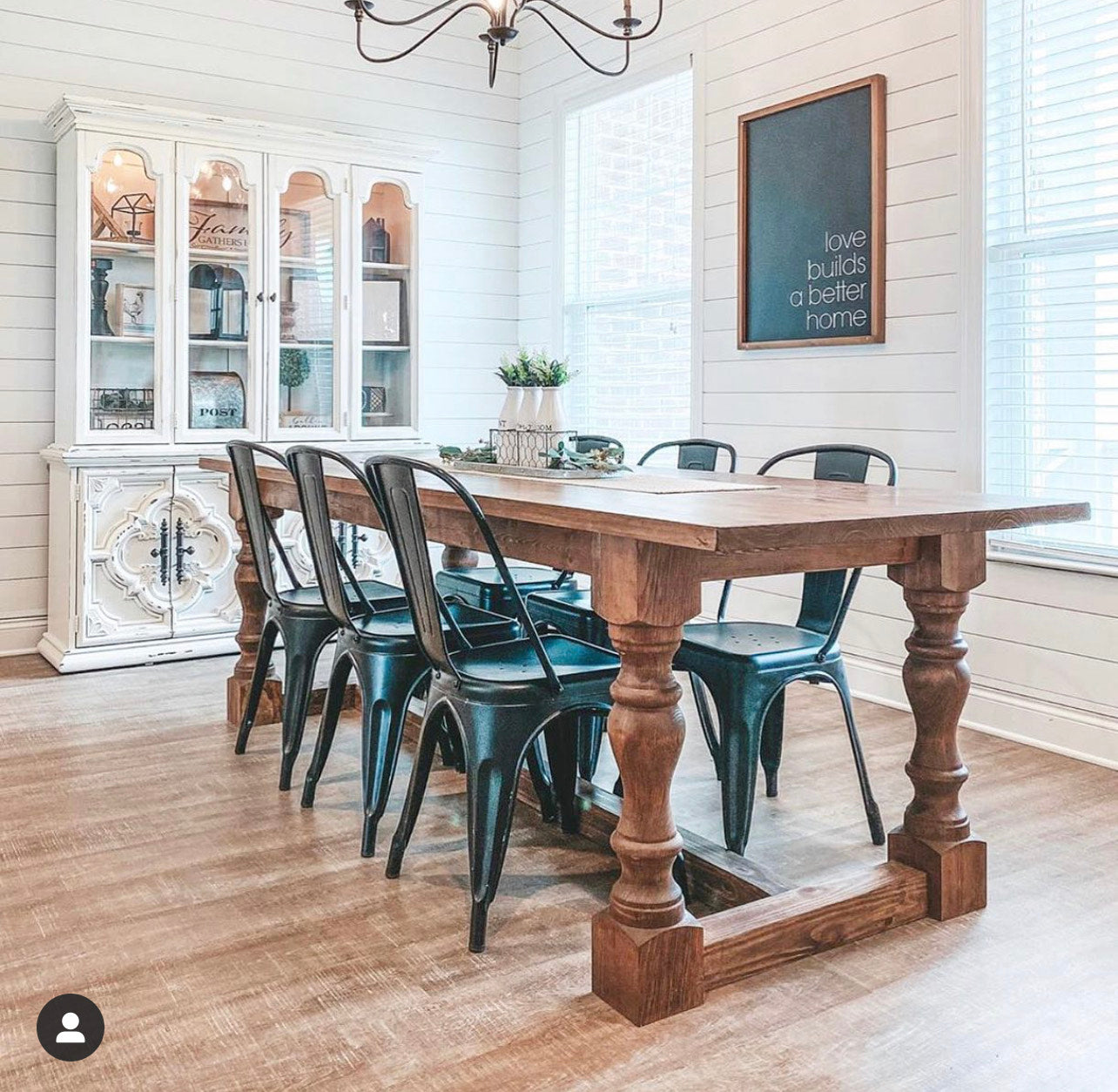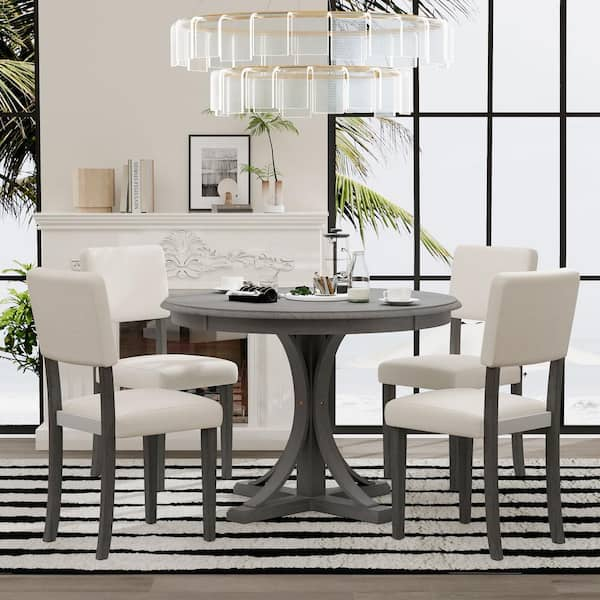Expert Tips for Installing Dining-room Table Legs for Optimum Stability
When it pertains to installing dining-room table legs, accomplishing maximum security is extremely important for both functionality and looks. The procedure begins with picking the appropriate materials and equipment, adhered to by careful positioning and consideration of weight distribution. Each step plays an important function in guaranteeing that the completed product endures day-to-day usage without compromising safety and security or layout stability. However, comprehending the nuances of these components can substantially affect the overall end result. What particular techniques can enhance stability also further?
Select the Right Legs
When picking the ideal legs for your dining-room table, it is necessary to consider both functionality and aesthetics. The legs you select will dramatically impact the general layout and security of the table. Initially, review the table's planned use; if you expect regular celebrations, sturdier legs, such as those made from solid wood or steel, might be preferable, as they use raised durability and support.
Next, think about the height and style of the legs in connection with the tabletop. Typical table generally range from 28 to 30 inches in elevation, so ensure the legs line up with this requirement for comfort. The design of the legs must enhance the design of the table top-- whether it be contemporary, rustic, or conventional. As an example, tapered legs can include a modern touch, while turned legs might share a more classic visual.

Select Appropriate Hardware
How can the appropriate hardware improve the stability and durability of your dining-room table? The option of appropriate hardware is essential to ensuring that the legs of your table are firmly attached and able to endure normal usage. Top notch screws, screws, and brackets supply the required toughness to support the weight of the table, as well as any type of added lots positioned upon it throughout meals or gatherings.
When choosing screws, go with those made from long lasting products such as stainless steel or brass, which withstand corrosion and maintain integrity gradually. The length of the screws is equally essential; they ought to pass through deeply into the table's structure without jeopardizing stability. For bolted links, consider using lock washers to stop loosening because of resonance or activity.
Additionally, using edge braces can include added assistance, especially for bigger tables or those with larger tops. These braces distribute weight equally and assist preserve the table's shape. Guaranteeing that the equipment you choose is proper for the details materials of your table will certainly additionally improve its general stability and durability, allowing you to appreciate your eating experience for many years to come.
Ensure Correct Positioning
Proper alignment of eating room table legs is vital for both aesthetic allure and functional stability. Misaligned legs can result in an unequal table top, which may not only be aesthetically unattractive yet also compromise the table's use. To achieve ideal alignment, begin by measuring the distance from the table's edges to the leg attachment factors. This makes certain that each leg is positioned equidistant from the sides, creating a well balanced look.
Use a level throughout installation to verify that each leg is vertical to the tabletop. This action is crucial, as even small disparities can intensify right into significant security issues with time. It is advisable to note the wanted leg positions on the bottom of the table with a pencil or covering up tape before protecting them. This method offers as an aesthetic guide, allowing for modifications as needed.
In addition, verify the placement after the first screws are tightened up, as changes might be essential prior to completely securing the hardware. By prioritizing proper placement, you not just enhance the table's overall layout yet additionally guarantee that it stays stable and functional for many years to find.

Consider Weight Distribution
After ensuring appropriate positioning of the dining-room table legs, it is very important to visit here consider weight distribution to enhance stability and capability. dining room table legs. Correct weight distribution is essential in protecting against guaranteeing and wobbling that the table can sustain its intended lots without danger of tipping or breaking down
When positioning the legs, guarantee they are placed at equivalent ranges from the facility of the table to uniformly disperse the weight across the framework. Take into consideration the weight of the tabletop and any kind of items that will regularly hinge on it, such as tabletop devices or decorative pieces. Tables with larger surfaces must ideally have legs positioned closer to the corners, as this makes best use of the base of support and minimizes the risk of instability.
Furthermore, if the table is planned for use in a high-traffic area, consider utilizing larger materials for the legs or adding maintaining elements, such as cross-bracing or a lower rack - dining room table legs. These adjustments can help keep equilibrium and avoid moving during usage. Eventually, a well-considered weight distribution strategy will dramatically boost the table's total efficiency, guaranteeing it stays a attractive and functional focal point for your dining area
Examination Security Prior To Usage
Evaluating the stability of the eating area table prior to usage is a critical action that must not be forgotten. If the table reveals instability, determine the legs or joints that may need adjustment.
Following, examine that all fasteners and screws are tightened up properly. Loosened connections can result in instability and potential damage over time. If necessary, make use of timber glue on joints to enhance security, making certain to enable adequate drying out time.

Final Thought
Finally, the installation of eating room table legs needs mindful consideration of products, placement, hardware, and weight distribution to accomplish optimum stability. By selecting strong legs and premium bolts, making sure specific placement, and find this distributing weight uniformly, the architectural honesty of the table can be considerably improved. Performing a stability test prior to regular usage further ensures that click here to read the table will endure everyday stress, consequently giving a dependable and risk-free dining experience.
When it comes to setting up dining room table legs, achieving maximum security is vital for both capability and looks. The legs you pick will substantially influence the general layout and security of the table (dining room table legs). Standard eating tables typically vary from 28 to 30 inches in height, so ensure the legs straighten with this criterion for comfort.Appropriate placement of eating area table legs is essential for both visual appeal and useful security.In conclusion, the installation of eating area table legs needs careful consideration of products, equipment, weight, and positioning circulation to achieve optimum stability
Comments on “Why Dining Room Table Legs Are Crucial for Your Table’s Stability”